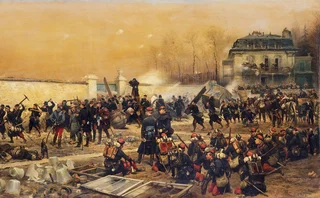Terracotta Cuts Path Into Wall Street Clusters
NEW YORK—Terracotta is making inroads in the Wall Street community with its Terracotta clustering solutions for Tomcat and vendor officials expect the first production of Terracotta's giant clusters in a bank by the third quarter of this year.
Last year, Terracotta unveiled an upgrade of its clustering software and a free, Web-based solution that will help user firms cluster their infrastructures in approximately 30 minutes. Included in that updated round of offerings is Terracotta Sessions for Tomcat, which provides free, drop-in clustering for the Apache Tomcat application server.
Terracotta is targeting Apache Tomcat because it was reported by IT market research firm Forrester Research as being the most widely used source servlet engine (DWT, May 15, 2006).
Major Wall Street firms have been conducting labs and tests with Terracotta for the middle office and have purchased applications for the front office, says Ari Zilka, founder and CEO of Terracotta.
"They're very interested because it's lighter weight for them," Zilka says. "They realize this is fledging territory."
Four investment firms are already on board testing the solution for the mid-office, Zilka says, though he declines to name them.
"We thought they would come with or without open source, but we talked to all these managing directors and they were very excited about the fact that we were going open source," Zilka says. "We suspect that by the third quarter there will be the first big production of Terracotta giant clusters in a bank."
Terracotta turned to open source in December 2006.
The Terracotta and Tomcat combination affects Wall Street "from top to bottom," Zilka says. "Between the front end and the middle office is where we impact. In the front end, all these Web applications can move instantaneously from Web Logic to Terracotta and they can do it overnight."
The idea is to get low-cost scaling instead of paying a company or consultant to do it, Zilka says. "Then you can hire developers who understand plain old Java and work on serving the business intelligence functioning and then Terracotta will help you run on a thousand machines," he says.
"I was at a clustering symposium in December for Wall Street to come and talk about what they're trying to do with grids, clusters and servers, and what type of software they're using. Analyst firms brought vendors who explicitly deal with this grid concept," Zilka says.
"The feedback from Wall Street was that they want to get together more often and talk," Zilka says. "They all thought they were off on their own doing something new, but they're really doing the same things."
Zilka says that Wall Street "doesn't want vendors in the mix. They would really rather do these clusters in open source, have access to source code and modify it as we see fit."
He acknowledges that the company "has a long way to go, but like the game of blackjack, we're ready to double down."
Last year, Terracotta unveiled a "Spring" version of its application. Spring is a Java application development framework and the Terracotta Spring offering is available for download at the vendor's Web site. Spring provides a component model that is intended as a basis for integration with other products and enterprise solutions, such as Terracotta's transparent clustering (DWT, Oct. 16, 2006).
"Spring is big because it basically lets you use what you need, when you need it," Zilka says.
Chloe Albanesius
Only users who have a paid subscription or are part of a corporate subscription are able to print or copy content.
To access these options, along with all other subscription benefits, please contact info@waterstechnology.com or view our subscription options here: http://subscriptions.waterstechnology.com/subscribe
You are currently unable to print this content. Please contact info@waterstechnology.com to find out more.
You are currently unable to copy this content. Please contact info@waterstechnology.com to find out more.
Copyright Infopro Digital Limited. All rights reserved.
As outlined in our terms and conditions, https://www.infopro-digital.com/terms-and-conditions/subscriptions/ (point 2.4), printing is limited to a single copy.
If you would like to purchase additional rights please email info@waterstechnology.com
Copyright Infopro Digital Limited. All rights reserved.
You may share this content using our article tools. As outlined in our terms and conditions, https://www.infopro-digital.com/terms-and-conditions/subscriptions/ (clause 2.4), an Authorised User may only make one copy of the materials for their own personal use. You must also comply with the restrictions in clause 2.5.
If you would like to purchase additional rights please email info@waterstechnology.com
More on Trading Tech
After acquisitions, Exegy looks to consolidated offering for further gains
With Vela Trading Systems and Enyx now settled under one roof, the vendor’s strategy is to be a provider across the full trade lifecycle and flex its muscles in the world of FPGAs.
Enough with the ‘Bloomberg Killers’ already
Waters Wrap: Anthony interviews LSEG’s Dean Berry about the Workspace platform, and provides his own thoughts on how that platform and the Terminal have been portrayed over the last few months.
BofA deploys equities tech stack for e-FX
The bank is trying to get ahead of the pack with its new algo and e-FX offerings.
Pre- and post-trade TCA—why does it matter?
How CP+ powers TCA to deliver real-time insights and improve trade performance in complex markets.
Driving effective transaction cost analysis
How institutional investors can optimize their execution strategies through TCA, and the key role accurate benchmarks play in driving more effective TCA.
As NYSE moves toward overnight trading, can one ATS keep its lead?
An innovative approach to market data has helped Blue Ocean ATS become a back-end success story. But now it must contend with industry giants angling to take a piece of its pie.
BlackRock, BNY see T+1 success in industry collaboration, old frameworks
Industry testing and lessons from the last settlement change from T+3 to T+2 were some of the components that made the May transition run smoothly.
Banks seemingly build more than buy, but why?
Waters Wrap: A new report states that banks are increasingly enticed by the idea of building systems in-house, versus being locked into a long-term vendor contract. Anthony explores the reason for this shift.







